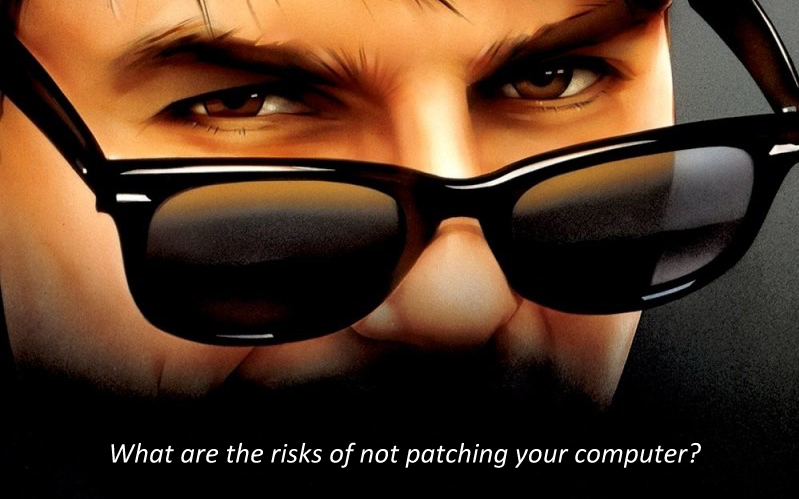
Say you want to keep your house safe. Like, really safe. You buy the most advanced security system money can buy, put up a bunch of lights on the exterior of your home, and even get a guard dog. You install video surveillance with hard drive recording and remote access, and you fervently support your local neighborhood watch program. Imagine, then, that you install all this equipment, and then you leave to go somewhere, double-locking all your doors and windows, and even doing a walk-around to check for potential threats.
After all this, though, you leave one window wide open. You notice it’s open right as you’re backing out of your driveway, but you’re in a hurry, so you don’t bother to go back in and shut it. Besides, you tell yourself, your other security measures are more than sufficient to protect your home. This scenario, in effect, is exactly the risk you take when you don’t properly patch your computer.
New Open Windows
For most of us, issues requiring computer support and service can seem like they will never happen. Despite regular news articles talking about viruses or malware attacks that affected “millions of computers,” it can be easy to see that as someone else’s problem, since, most likely, you haven’t been specifically affected by a problem in the past. However, all it takes is the wrong website or program at the right time to allow your computer to become infected, putting all of your personal information and valuable files at risk.
The problem with trusting in past successes, that is, having not been affected by malware in the past, is that new attacks are being released on an almost daily basis. It is quite true that many modern antivirus and anti-malware programs do a great job of keeping up-to-date automatically to prevent viruses and malware from affecting your computer. However, the problem is that pretty much any program that can access content on the Internet is susceptible to an attack. Since each computer has different combinations of software used by the end user, protecting against each possible attack is nearly impossible for generic antivirus and anti-malware programs, as important as they are to have installed.
Closing the Window
That’s where patches come in. Patches are updates to your computer’s operating system (Windows, Mac, etc.) that specifically address a known vulnerability in the operating system itself, or in a specific piece of software used by that operating system (Microsoft Word, iTunes, etc.). These patches address the vulnerability on a base level, meaning that, unlike an antivirus program that simply blocks the virus from gaining access to your system, a patch changes the code within the system itself to make the virus or malware totally inoperable.
Again, due to the extreme number of threats out there today, a generic piece of software such as an antivirus or anti-malware program cannot protect against all threats, and so these threats need to be addressed by the companies who manufacture your software. It makes sense, since no one knows the software better than the companies who make it, and as a result, no one knows better how to protect it.
What if…?
Sometimes, though, you might be one of the “lucky” ones who were attacked by a malware attack before a patch was released. Or, maybe you didn’t realize just how important patches were, and decided to not install one. Either way, if you do end up with a virus or malware on your computer, it’s usually time to get help from professional computer support and service.
Typically, trying to fix something as major as this on your own will create more problems than it solves. At Magnify247.com, we can assist you with your computer service needs, and get your computer back to like-new very quickly. Above all, though, remember to “close” your open windows in your computer’s security network by installing security patches quickly and completely.






